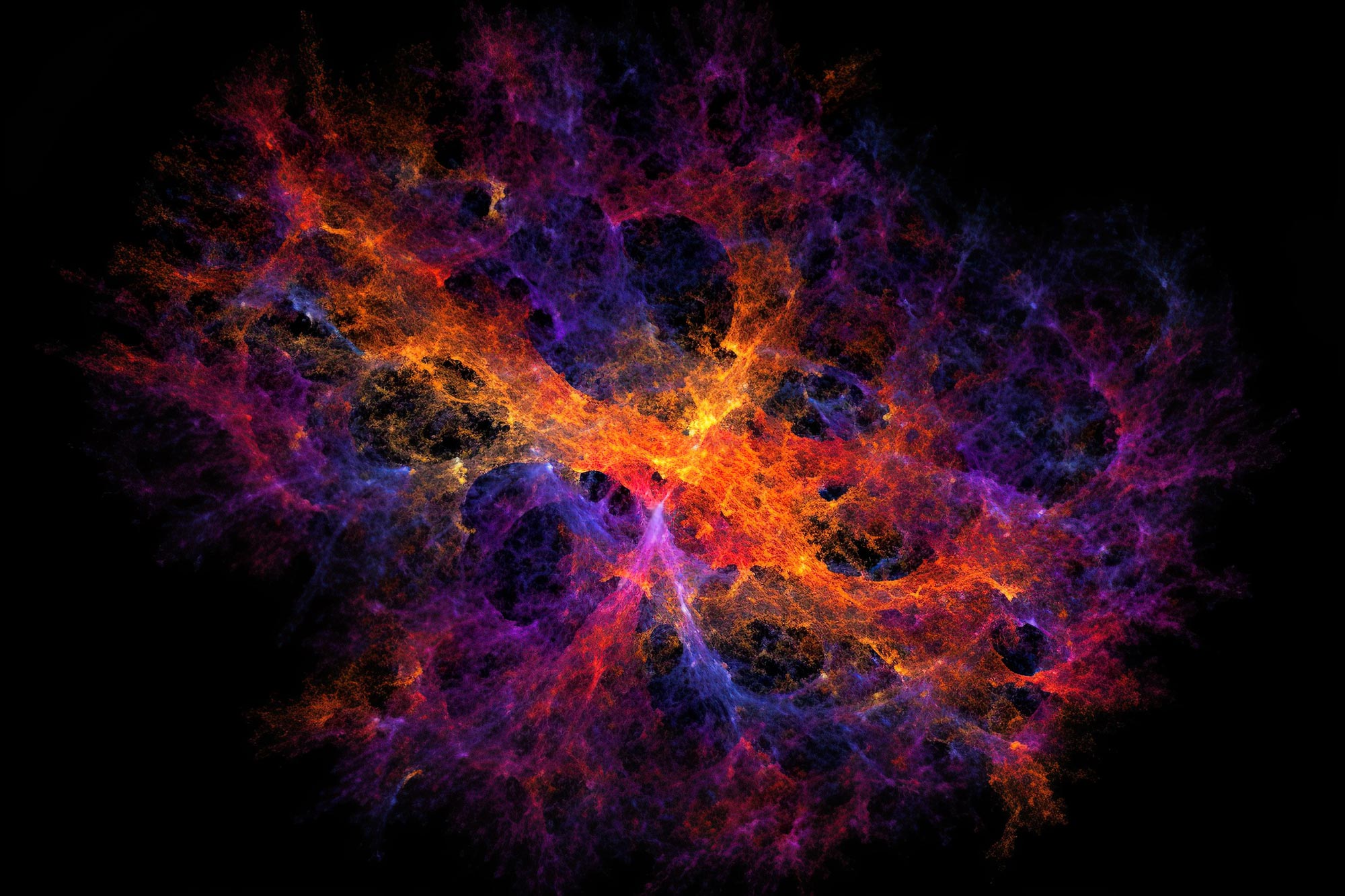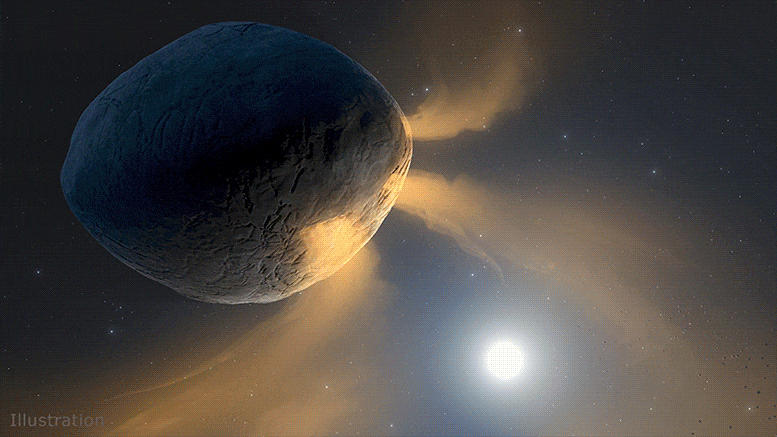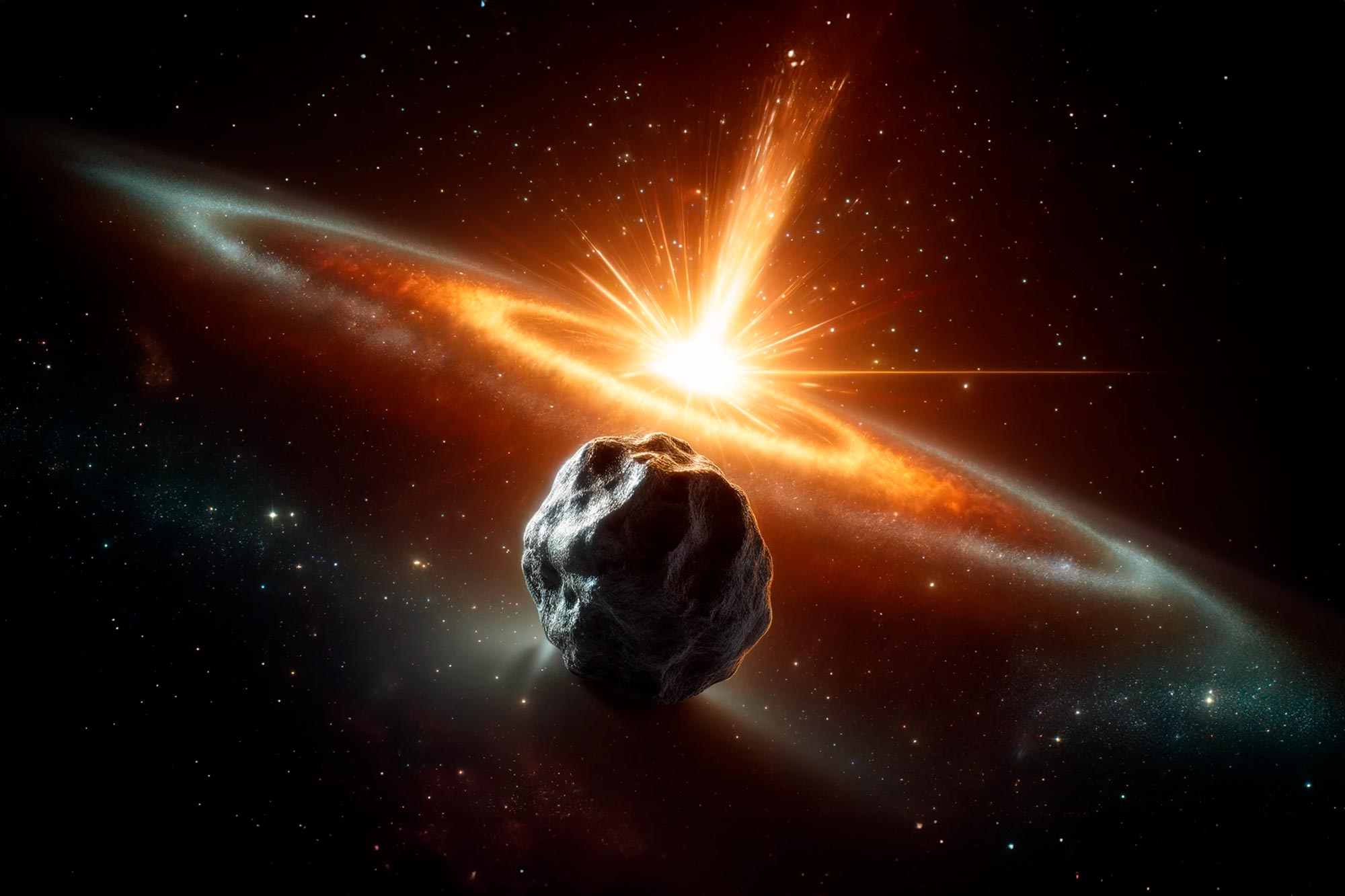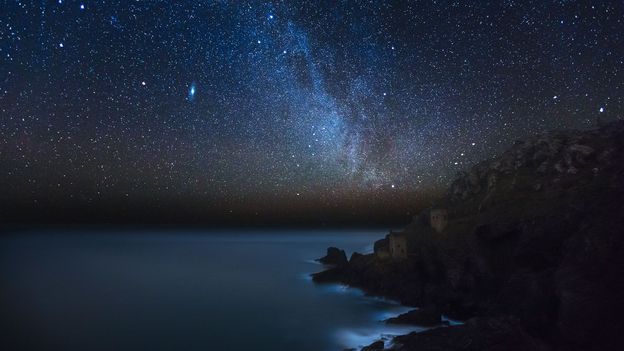Tim ahli astrofisika dan kosmologi internasional telah menyerahkan lima makalah yang menunjukkan bahwa “penggumpalan” (nilai S8) materi gelap alam semesta adalah 0,76, angka yang konsisten dengan survei pelensaan gravitasi lainnya tetapi tidak dengan nilai 0,83 yang berasal dari gelombang mikro kosmik latar belakang. .
Sebuah tim ilmuwan internasional menggunakan Advanced Technologies dan Hyper Suprime-Cam untuk mempelajari ‘gumpalan’ materi gelap, menemukan nilai S8 sebesar 0,76, yang kontras dengan nilai 0,83 dari latar belakang gelombang mikro kosmik. Perbedaan ini dapat mengindikasikan kesalahan pengukuran atau model kosmologis standar yang tidak lengkap.
Tim ahli astrofisika dan kosmologi internasional di berbagai institut termasuk Kavli Institute for the Physics and Mathematics of the Universe (Kavli IPMU) telah mempresentasikan satu set lima makalah penelitian, mengukur nilai “gumpalan” materi gelap di alam semesta, yang diketahui untuk kosmolog seperti S.8, dari 0,76, yang selaras dengan nilai yang ditemukan oleh survei pelensaan gravitasi lain yang mengamati alam semesta yang relatif muda — tetapi tidak selaras dengan nilai 0,83 yang berasal dari latar belakang gelombang mikro kosmik, yang ditelusuri kembali ke asal mula alam semesta ketika alam semesta berusia sekitar 380.000 tahun. Hasilnya telah diunggah sebagai lembaran pra-cetak ke arXiv.
Kesenjangan antara kedua nilai ini kecil, tetapi karena semakin banyak penelitian yang mengonfirmasi kedua nilai tersebut, hal itu tampaknya tidak disengaja. Kemungkinannya adalah ada bug atau kesalahan yang sampai sekarang tidak diketahui dalam salah satu dari dua pengukuran ini atau bahwa model kosmologis standar tidak lengkap dengan cara yang menarik.
Energi gelap dan materi gelap membentuk 95% alam semesta yang kita lihat sekarang, tetapi kita hanya memahami sedikit tentang apa sebenarnya mereka dan bagaimana mereka berevolusi sepanjang sejarah alam semesta. Gumpalan materi gelap mendistorsi cahaya galaksi jauh melalui pelensaan gravitasi lemah, sebuah fenomena yang diprediksi oleh teori relativitas umum Einstein.

Gambar 1: Contoh gambar yang diperoleh dengan HSC-SSP. Kredit: Proyek HSC-SSP dan NAOJ
“Distorsi ini adalah efek yang sangat kecil. Bentuk satu galaksi terdistorsi dalam jumlah yang tak terlihat,” kata Profesor Kavli IPMU Masahiro Takada, tetapi menggabungkan pengukuran jutaan galaksi memungkinkan seseorang untuk mengukur distorsi dengan presisi tinggi.
Model Standar ditentukan oleh beberapa angka saja: laju ekspansi alam semesta, yang merupakan ukuran seberapa padat materi gelap (S8), kontribusi relatif dari konstituen alam semesta (materi, materi gelap, dan energi gelap), kerapatan keseluruhan alam semesta, dan besaran teknis yang menjelaskan bagaimana aglomerasi alam semesta pada skala besar berhubungan dengan aglomerasi pada skala kecil.
Kosmolog sangat ingin menguji model ini dengan membatasi angka-angka ini dengan berbagai cara, seperti mengamati fluktuasi latar belakang gelombang mikro kosmik, memodelkan sejarah perluasan alam semesta, atau mengukur pengelompokan alam semesta di masa lalu yang relatif baru.
Tim yang dipimpin astronom dari Kavli IPMU, University of Tokyo,[{” attribute=””>Nagoya University, Princeton University, and astronomical communities of Japan and Taiwan, have spent the past year teasing out the secrets of this most elusive material, dark matter, using sophisticated computer simulations and data from the first three years of the Hyper Suprime-Cam survey. The observations from this survey used one of the most powerful astronomical cameras in the world, the Hyper Suprime-Cam (HSC) mounted on the Subaru Telescope on the summit of Maunakea in Hawaii.

Figure 2: The measurement results of S8 parameter from HSC-SSP Year 3 data. The chart shows the results from four different methods, which used different parts of the HSC-SSP Year 3 data or combined the HSC-SSP Year 3 data with other data. For comparison, “Planck CMB” shows the measurement result for S8 from the cosmic microwave background data from the Planck satellite. “Other weak lensing results” shows the results from similar weak lensing measurements based on the Dark Energy Survey (DES) and Kilo-Degree Survey (KiDS) data. Credit: Kavli IPMU
Hiding and uncovering the data
The team performed a “blinded analysis.”
“Scientists are human beings, and they do have preferences. Some would love to really find something fundamentally new, while others might feel comfortable if they find results that look consistent with foreseen results. Scientists have become self-aware enough to know that they will bias themselves, no matter how careful they are, unless they carry out their analysis without allowing themselves to know the results until the end,” said Nagoya University Kobayashi-Maskawa Institute for the Origin of Particles and the Universe (KMI) Associate Professor Hironao Miyatake.
To protect the results from such biases, the HSC team hid their results from themselves and their colleagues for months. The team even added an extra obfuscating layer: they ran their analyses on three different galactic catalogs, one real and two fake with numerical values offset by random values. The analysis team didn’t know which of them was real, so even if someone did accidentally see the values, the team wouldn’t know if the results were based on the real catalog or not.
The team spent a year on the blind analysis. On December 3 2022, the team gathered together on Zoom – one Saturday morning in Japan, Friday evening in Princeton – for the “unblinding.” The team unveiled the data, and ran their plots, immediately they saw it was great according to Takada. “Blinded analysis means you cannot take a peak at the results while running the analysis, which was extremely stressful, but as soon I saw the final result, all of that anxiety flew out of the window,” said Kavli IPMU graduate student Sunao Sugiyama.

Figure 3: An example of a 3D distribution of dark matter derived from HSC-SSP. This map is obtained by using the first year’s data, but the present study examined an area on the sky about three times larger than that. Credit: University of Tokyo/NAOJ
A huge survey with the world’s largest telescope camera
HSC is the largest camera on a telescope of its size in the world. The survey that the research team used covers about 420 square degrees of the sky, about the equivalent of 2000 full moons. It is not a single contiguous chunk of sky, but split among six different pieces, each about the size of a person’s outstretched fist. The 25 million galaxies the researchers surveyed are so distant that instead of seeing these galaxies as they are today, the HSC recorded how they were billions of years ago.
Each of these galaxies glows with the fires of tens of billions of suns, but because they are so far away, they are extremely faint, as much as 25 million times fainter than the faintest stars we can see with the naked eye.
For more on this research, see Measuring Dark Matter With Hyper Suprime-Cam Reveals Discrepancy.
References:
“Hyper Suprime-Cam Year 3 Results: Cosmology from Galaxy Clustering and Weak Lensing with HSC and SDSS using the Emulator Based Halo Model” by Hironao Miyatake, Sunao Sugiyama, Masahiro Takada, Takahiro Nishimichi, Xiangchong Li, Masato Shirasaki, Surhud More, Yosuke Kobayashi, Atsushi J. Nishizawa, Markus M. Rau, Tianqing Zhang, Ryuichi Takahashi, Roohi Dalal, Rachel Mandelbaum, Michael A. Strauss, Takashi Hamana, Masamune Oguri, Ken Osato, Wentao Luo, Arun Kannawadi, Bau-Ching Hsieh, Robert Armstrong, Yutaka Komiyama, Robert H. Lupton, Nate B. Lust, Lauren A. MacArthur, Satoshi Miyazaki, Hitoshi Murayama, Yuki Okura, Paul A. Price, Tomomi Sunayama, Philip J. Tait, Masayuki Tanaka and Shiang-Yu Wang, 3 April 2023, Astrophysics > Cosmology and Nongalactic Astrophysics.
arXiv:2304.00704
“Hyper Suprime-Cam Year 3 Results: Measurements of Clustering of SDSS-BOSS Galaxies, Galaxy-Galaxy Lensing and Cosmic Shear” by Surhud More, Sunao Sugiyama, Hironao Miyatake, Markus Michael Rau, Masato Shirasaki, Xiangchong Li, Atsushi J. Nishizawa, Ken Osato, Tianqing Zhang, Masahiro Takada, Takashi Hamana, Ryuichi Takahashi, Roohi Dalal, Rachel Mandelbaum, Michael A. Strauss, Yosuke Kobayashi, Takahiro Nishimichi, Masamune Oguri, Arun Kannawadi, Robert Armstrong, Yutaka Komiyama, Robert H. Lupton, Nate B. Lust, Satoshi Miyazaki, Hitoshi Murayama, Yuki Okura, Paul A. Price, Philip J. Tait, Masayuki Tanaka and Shiang-Yu Wang, 3 April 2023, Astrophysics > Cosmology and Nongalactic Astrophysics.
arXiv:2304.00703
“Hyper Suprime-Cam Year 3 Results: Cosmology from Galaxy Clustering and Weak Lensing with HSC and SDSS using the Minimal Bias Model” by Sunao Sugiyama, Hironao Miyatake, Surhud More, Xiangchong Li, Masato Shirasaki, Masahiro Takada, Yosuke Kobayashi, Ryuichi Takahashi, Takahiro Nishimichi, Atsushi J. Nishizawa, Markus M. Rau, Tianqing Zhang, Roohi Dalal, Rachel Mandelbaum, Michael A. Strauss, Takashi Hamana, Masamune Oguri, Ken Osato, Arun Kannawadi, Robert Armstrong, Yutaka Komiyama, Robert H. Lupton, Nate B. Lust, Satoshi Miyazaki, Hitoshi Murayama, Yuki Okura, Paul A. Price, Philip J. Tait, Masayuki Tanaka and Shiang-Yu Wang, 3 April 2023, Astrophysics > Cosmology and Nongalactic Astrophysics.
arXiv:2304.00705
“Hyper Suprime-Cam Year 3 Results: Cosmology from Cosmic Shear Power Spectra” by Roohi Dalal, Xiangchong Li, Andrina Nicola, Joe Zuntz, Michael A. Strauss, Sunao Sugiyama, Tianqing Zhang, Markus M. Rau, Rachel Mandelbaum, Masahiro Takada, Surhud More, Hironao Miyatake, Arun Kannawadi, Masato Shirasaki, Takanori Taniguchi, Ryuichi Takahashi, Ken Osato, Takashi Hamana, Masamune Oguri, Atsushi J. Nishizawa, Andrés A. Plazas Malagón, Tomomi Sunayama, David Alonso, Anže Slosar, Robert Armstrong, James Bosch, Yutaka Komiyama, Robert H. Lupton, Nate B. Lust, Lauren A. MacArthur, Satoshi Miyazaki, Hitoshi Murayama, Takahiro Nishimichi, Yuki Okura, Paul A. Price, Philip J. Tait, Masayuki Tanaka and Shiang-Yu Wang, 3 April 2023, Astrophysics > Cosmology and Nongalactic Astrophysics.
arXiv:2304.00701
“Hyper Suprime-Cam Year 3 Results: Cosmology from Cosmic Shear Two-point Correlation Functions” by Xiangchong Li, Tianqing Zhang, Sunao Sugiyama, Roohi Dalal, Markus M. Rau, Rachel Mandelbaum, Masahiro Takada, Surhud More, Michael A. Strauss, Hironao Miyatake, Masato Shirasaki, Takashi Hamana, Masamune Oguri, Wentao Luo, Atsushi J. Nishizawa, Ryuichi Takahashi, Andrina Nicola, Ken Osato, Arun Kannawadi, Tomomi Sunayama, Robert Armstrong, Yutaka Komiyama, Robert H. Lupton, Nate B. Lust, Satoshi Miyazaki, Hitoshi Murayama, Takahiro Nishimichi, Yuki Okura, Paul A. Price, Philip J. Tait, Masayuki Tanaka, Shiang-Yu Wang, 3 April 2023, Astrophysics > Cosmology and Nongalactic Astrophysics.
arXiv:2304.00702

“Pemikir jahat. Sarjana musik. Komunikator yang ramah hipster. Penggila bacon. Penggemar internet amatir. Introvert.”




/cloudfront-us-east-2.images.arcpublishing.com/reuters/TDRVAOQVK5LJZNRCSKQB7LTAV4.jpg)
